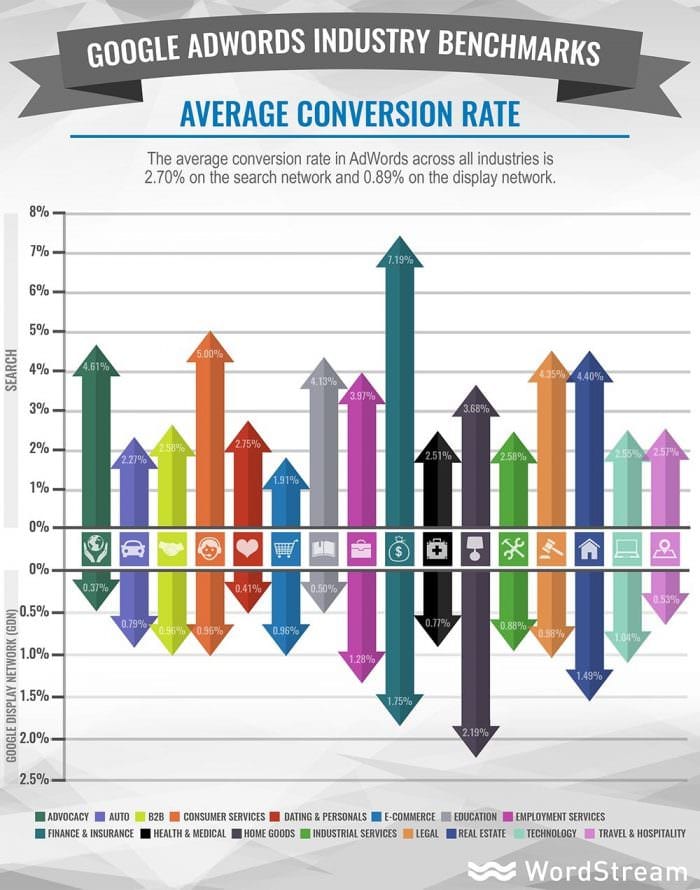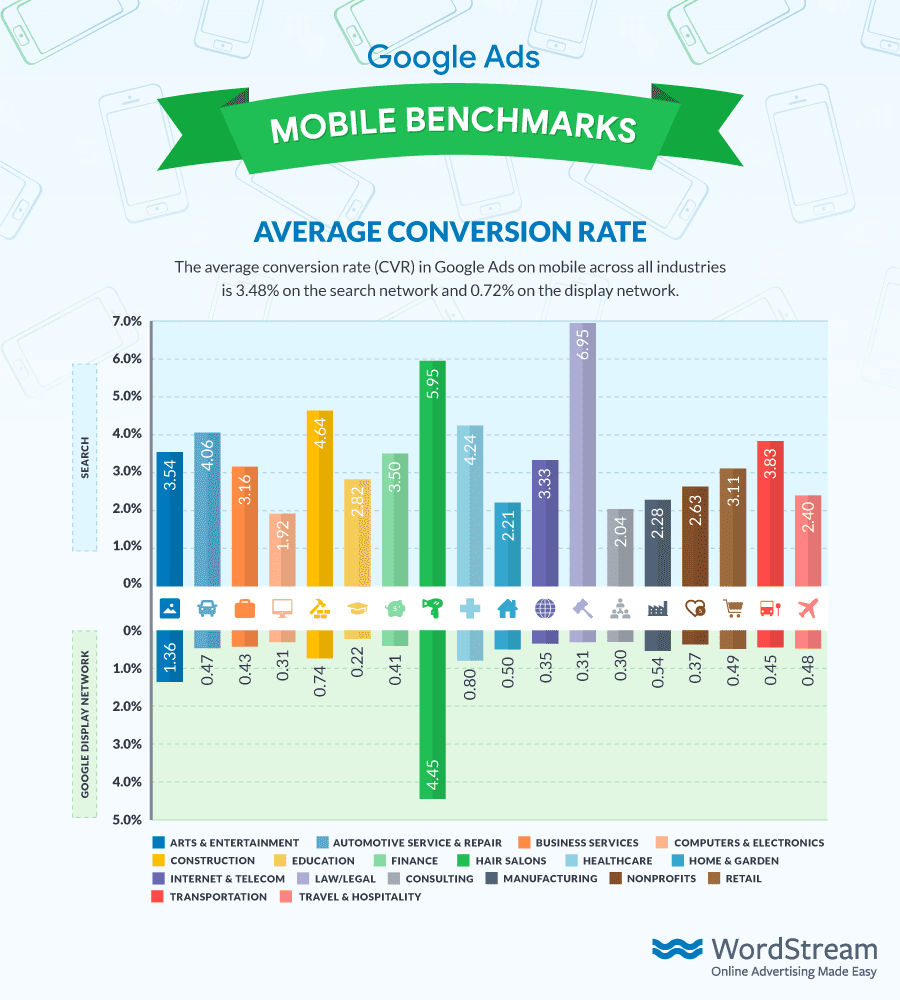Chart of the day: A comparison of the effectiveness of paid search marketing contrasting Google’s search network with the display network
This chart gives an update to historical data on conversion rates in Google Ads from the Google Ads management platform Wordstream.
It’s part of new benchmarking paid search marketing mobile statistics by industry. If you’re considering paid search it gives you an idea of the conversion rates you can expect when making the business case. Of course, tests will show you rates specific to your market, type of keywords (Brand, generic, product, long tail, etc) and your proposition, but this gives an indication. The full report also covers clickthrough rate and cost to help you build conversion rate funnel spreadsheet revenue models which are provided as resources in Excel for our premium members.
Mobile Google Ads conversion rates by sector
The new 2018 cross-industry Google Ads clickthrough rate and conversion benchmarks shows that:
The average conversion rate in Google Ads on mobile across all industries is 3.48% on the search network and 0.72% on the display network.
It’s no surprise that the conversion rate in the search network is much higher than in the display network since in the search network, searchers are typing in product and brand names when they have specific intent. This isn’t the case in the display network where they are responding to banner and text ads, typically on publisher sites.
Here are the results from 18 industries which could be useful if you are a startup modelling conversion rates as part of a business plan, or if you want a top-level comparison for your activities with others in your industry.
Of course, the outcome that is measured as conversion rate will vary according to sector and depending on the type of keyword, brand searches always have higher clickthrough and conversion rates than generic searches, for example. For retail, the outcome will be conversion to sale, but in many other sectors show, the conversion will be conversion to lead.
Previous desktop metrics for comparison

About these AdWords benchmarks
- Source: Although published by Wordstream this year, this report is based on a sample of 2,367 US-based WordStream client accounts in all verticals (representing $34.4 million in aggregate AdWords spend) who were advertising on Google AdWords’ Search and Display networks in Q2 2015. “Averages” are technically median figures to account for outliers. All currency values are posted in USD.
- Industry sectors covered: Advocacy, Auto, B2B, Consumer Services, Dating & Personals, E-Commerce, Education, Employment Services, Finance & Insurance, Health & Medical, Home Goods, Industrial Services, Legal, Real Estate, Technology, and Travel & Hospitality.
Comparison to previous AdWords conversion rate data
We have kept this data for reference to show how conversion rates have changed. Note that previous results were true averages, so didn’t include outliers. Here’s a summary of the previous findings:
- Average conversion rate for the search network in Q3 2012: 5.63%
- Average conversion rate from the display network in Q3 2012: 4.68%
- The Travel industry has the lowest conversion rates
- Internet / Telecoms has the highest conversion rates across search & display.
- The display network (ads outside of Google on publisher sites useful for generating awareness) generates 5x the volume of impressions but 1/5 of the clicks compared to the search network (searches within Google and its partners).
- Clickthrough rates are not covered by this research, but Wordstream suggest an average 2% to 5% paid search clickthrough rate for competitive industries and a 5%+ click-through rate for non-competitive industries for top positions with brand terms higher.
The thing to remember with the data above is that a conversion is not necessarily a sale it includes lead/data capture as well. While industry benchmarks are great if you are one of the bigger players in the industry be careful not to get too hung up on them, work to your own cost per sale and use such metrics as guides not absolutes. (view original post).

